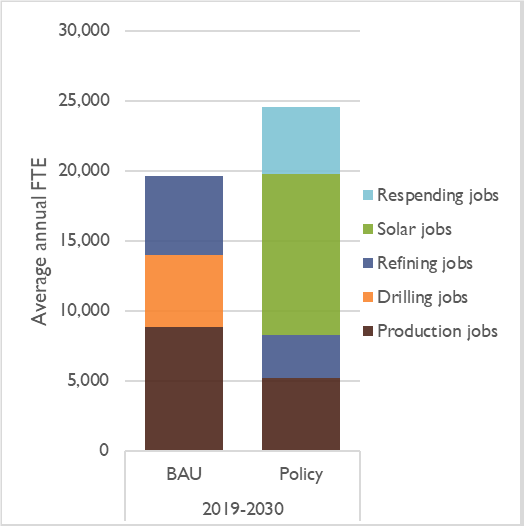Can Clean Energy Replace California Oil Production?
California often leads the nation in its efforts to reduce greenhouse gas (GHG) emissions by decreasing the use of fossil fuels. Also important—but often overlooked—is California’s role as an oil producer. While this role has declined, the state still produces about 5 percent of U.S. crude oil, or 0.5 percent of world production.
A newly released report, Can Clean Energy Replace California Oil Production?, describes Synapse Energy Economics’ analysis of the GHG and economic impacts of reducing oil output in California. The study compares a business-as-usual (BAU) scenario with a policy scenario that would end all new oil drilling in the state and ban oil production within 2,500 feet of homes, schools, and hospitals. The latter measure, proposed by environmental justice advocates in Los Angeles and elsewhere, would mitigate the slew of local environmental and human health impacts associated with oil extraction. Under this policy scenario, the oil cutbacks (assuming they were all gasoline) are replaced by enough new solar power to fuel an equivalent number of vehicle miles travelled using electric vehicles.

The Synapse analysis finds that the state as a whole gains about 5,000 full-time equivalent (FTE) jobs per year. Cutbacks in oil jobs are almost exactly replaced by new solar energy jobs. In addition, because electric vehicles are much cheaper to operate per mile, consumer “respending” of fuel savings generates about 5,000 new jobs. The policy scenario also avoids 48.4 million metric tons of CO2 emissions per year by 2030. Using the Obama administration’s estimates of the social cost of carbon, these avoided GHG emissions alone are worth $2.8 billion per year by 2030.